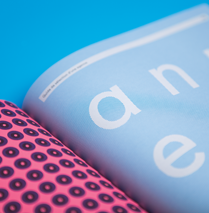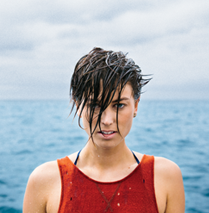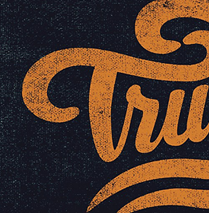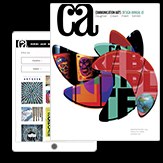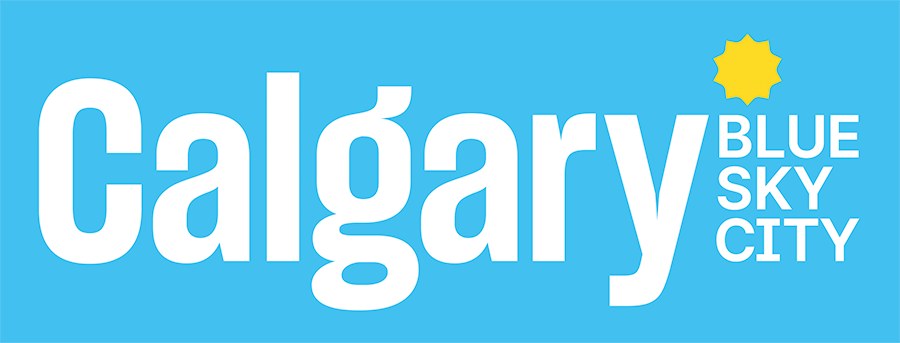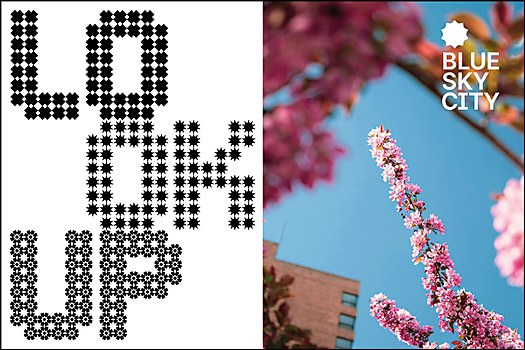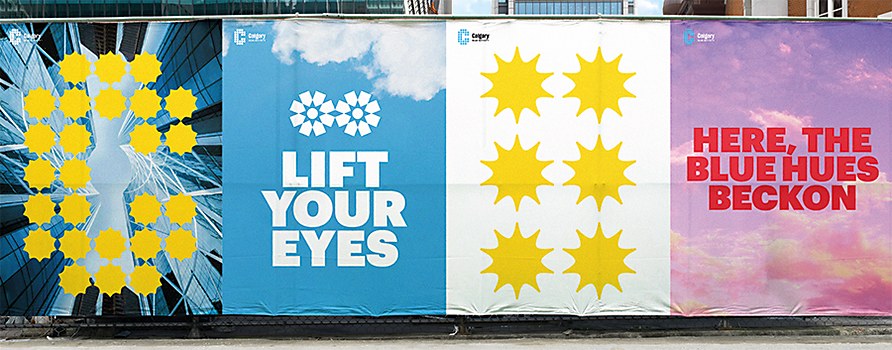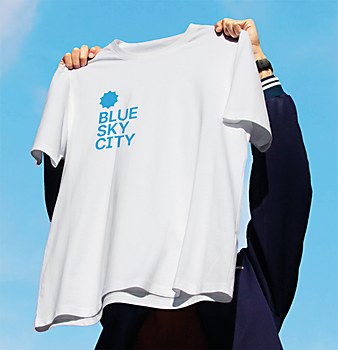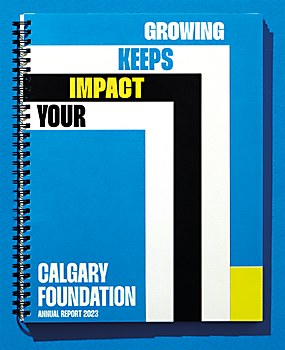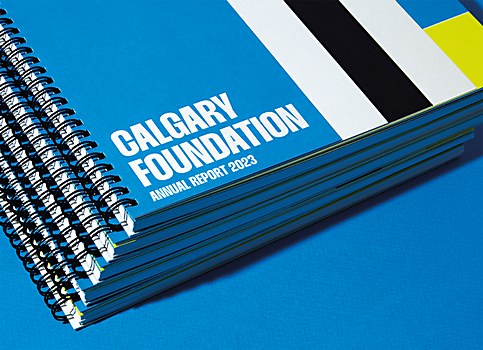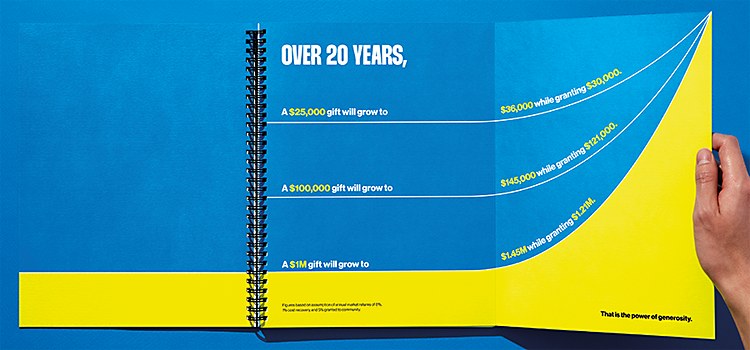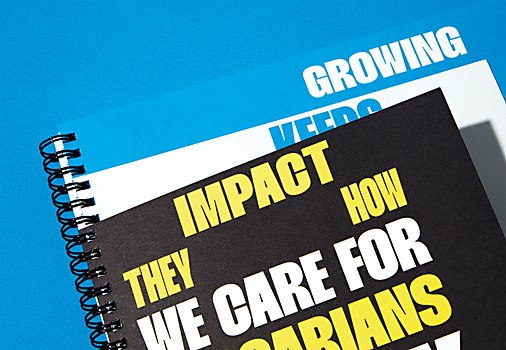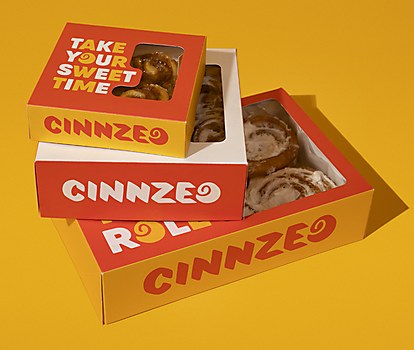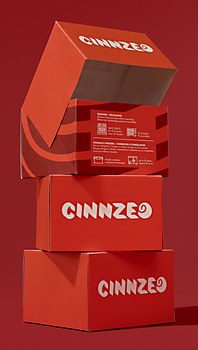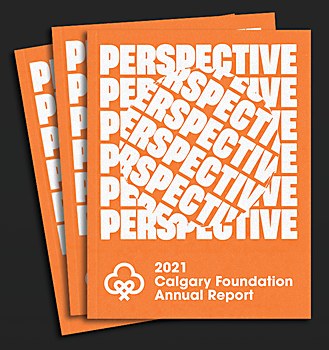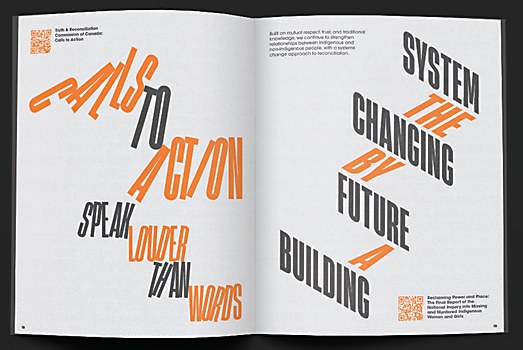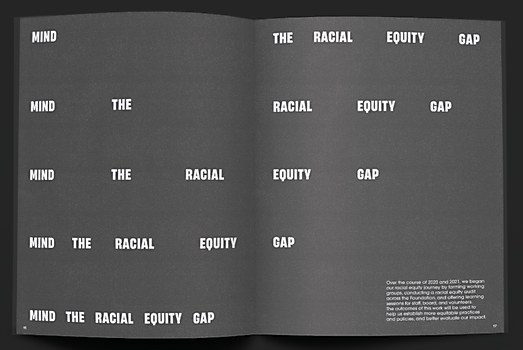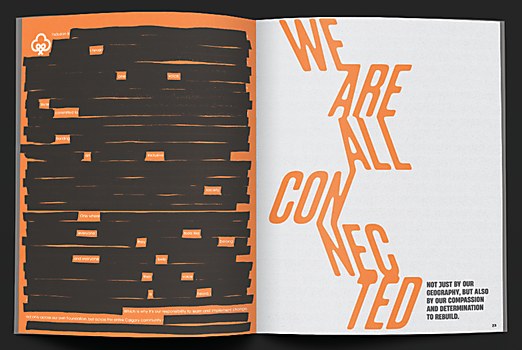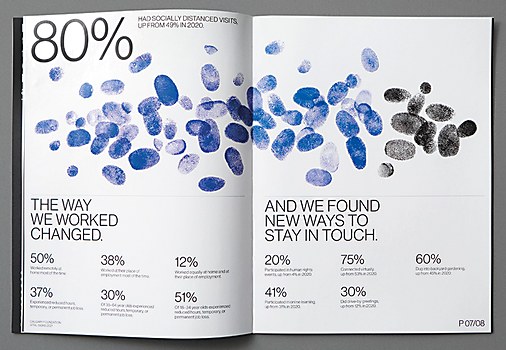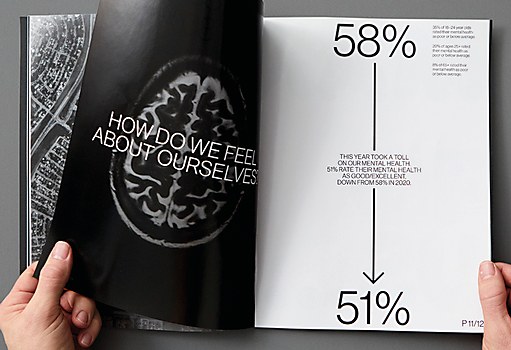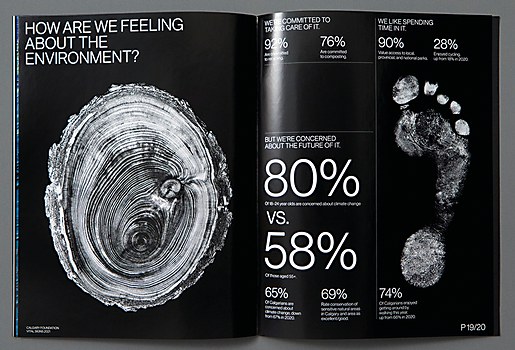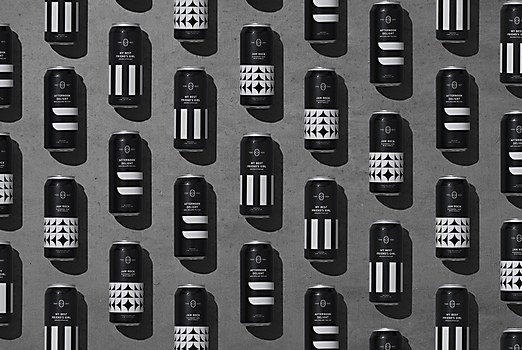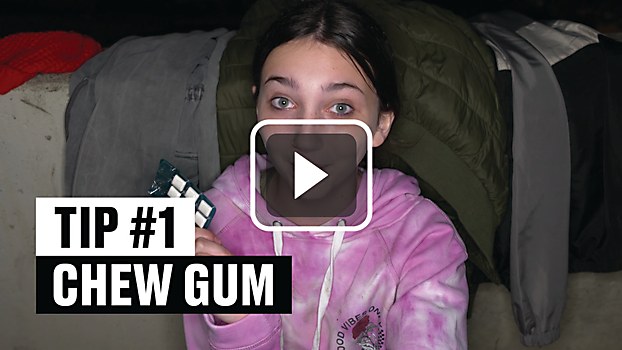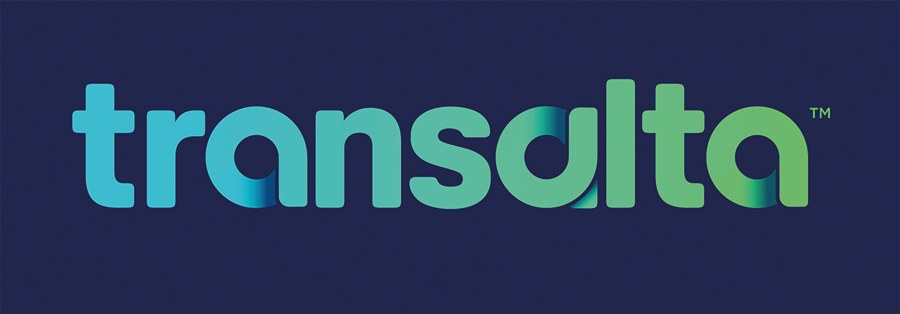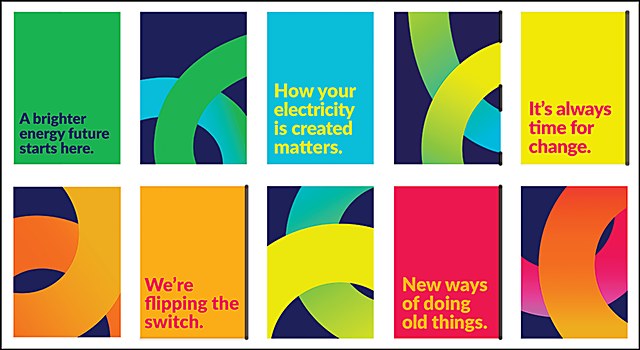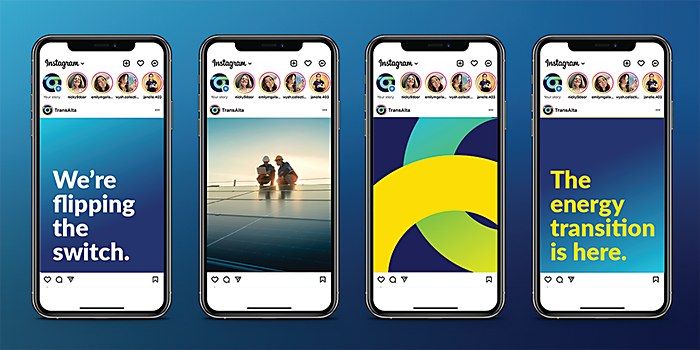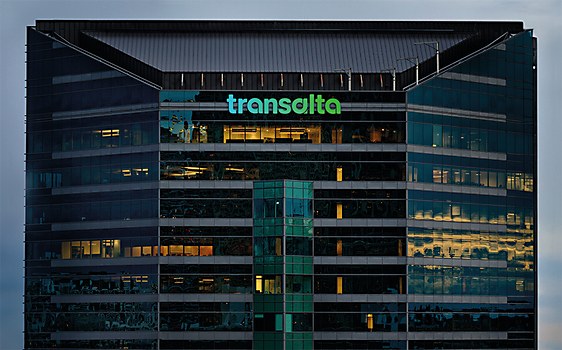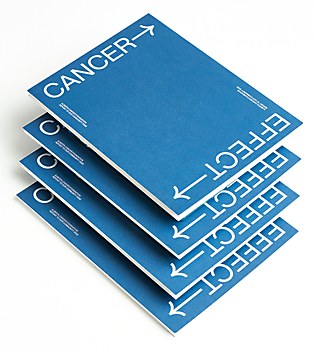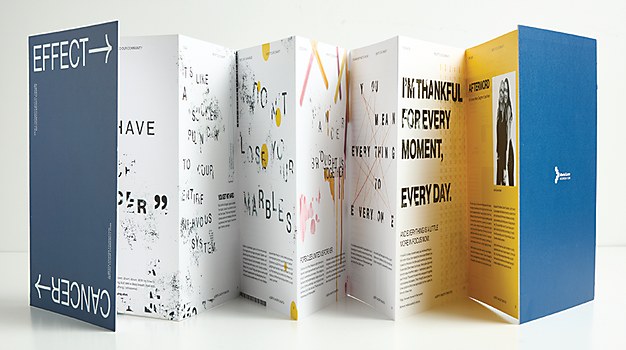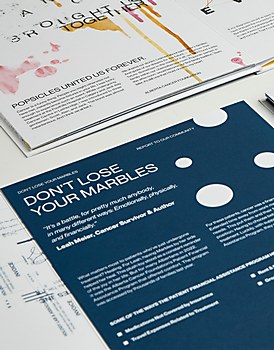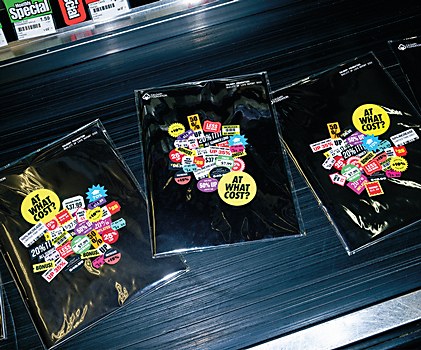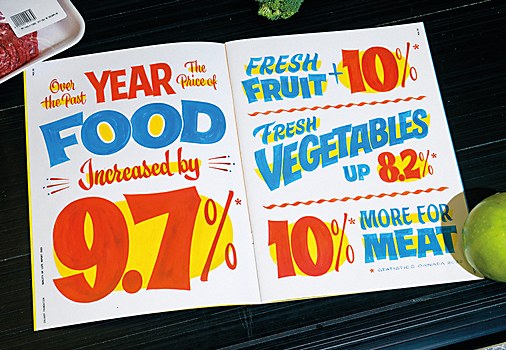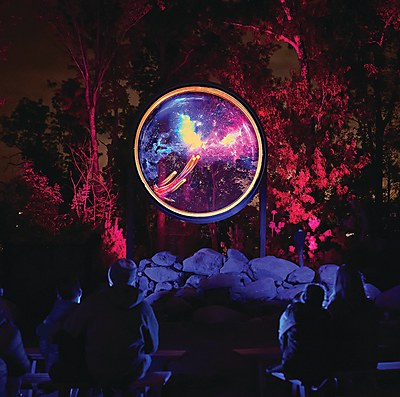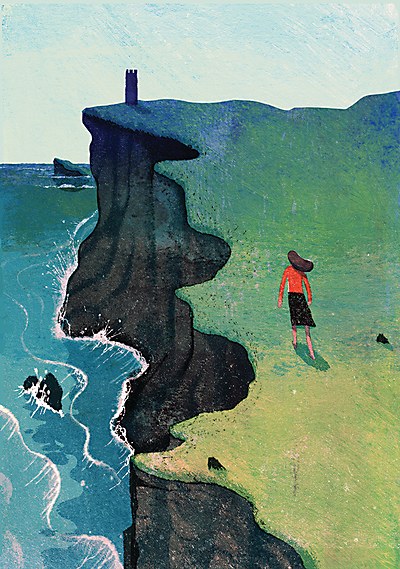Calgary, Alberta, is famous for many things, including its mammoth oil and gas industries, the annual Calgary Stampede—the world’s largest outdoor rodeo—and its proximity to the spectacular Rocky Mountains. Know what it’s not known for? Creatives. With few educational programs churning out art directors, copywriters and designers, most large clients don’t seek out agencies here. Any local talent is swiftly scooped up by agencies in other Canadian cities like Montréal, Toronto and Vancouver.
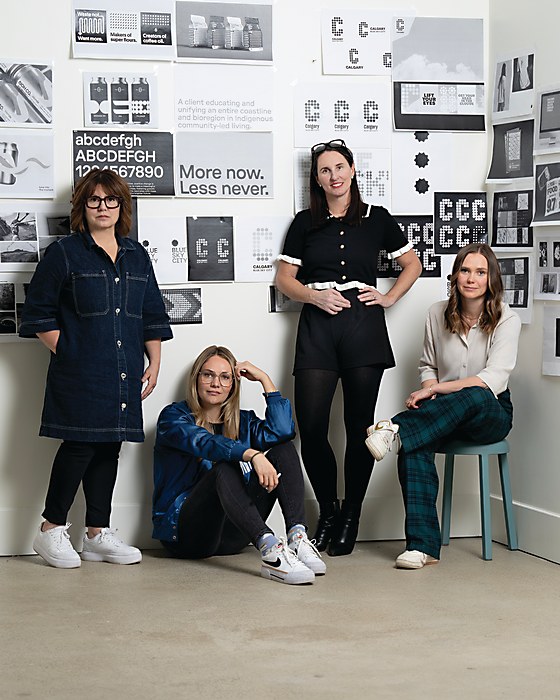
Stephanie Kochorek, chief executive officer; Jill Dewes,
chief growth officer; and Miranda Thorne,
chief operating officer.
But Daughter, an award-winning design and creative agency, is changing that perception. Small, scrappy and determined to establish Calgary as a creative stronghold, this tight-knit team is standing out with heartfelt, original work that isn’t afraid to break traditional models and show emotion.
“We get stuff done fast, and we’re very close to production,” says Daughter’s founder and chief executive officer Stephanie Kochorek. “It’s not like some of the larger agencies where you have a full-time producer, and the creatives come up with the idea and it’s sort of out their hands. We hold everything from the very beginning to the very end. We’re really nimble and agile, which I think makes [us] stronger creatives in the end.”
Browse Projects
Executive creative director Keli Pollock notes that being a smaller firm—the team numbers about 20—enables Daughter to present innovative solutions and take risks.
“We don’t get big budgets or generous timelines, so sometimes you have to create your own opportunities, and it’s just sheer will that gets the good work out,” explains Pollock. “We just have to roll up our sleeves and say, ‘This is going to happen because we want it to.’ With smaller budgets, there’s a little bit more freedom with our clients. There aren’t six VPs from the client side at every TV shoot. Sometimes, there isn’t even one client (on set), and we just go for it—and it’s really fun.”
A culture of support and excellence
Before founding Daughter in 2016, Kochorek endured what many creatives experience at some point in their careers: workplace cultures that felt more like pressure cookers.
“Keli and I both grew up in high-stress agency environments, where there wasn’t a ton of empathy,” recalls Kochorek. “I cried at work—I think Keli probably cried at work—and there was a lot of fear when presenting ideas. We got stuff done, but that energy of being afraid doesn’t run clean. You can do it for a certain amount of time, but at every job I held, I was burnt out within two years.”
When starting her own company in 2016, Kochorek realized there was a better way to do things while still being effective.
“We’ve put a lot of emphasis on creating an environment where there’s a lot of safety and trust between the team members,” she explains. “Creating is always scary. You have to approach the blank page, pull something from your soul and say something if the work’s going to be good. That’s a vulnerable act. So, we’ve worked hard to create team dynamics where people feel comfortable doing that.”
Making sure everyone feels challenged yet supported means striking a fine balance, because not every idea is up to snuff. Kochorek notes that Pollock leads the charge with strength and compassion.
“Keli’s very straightforward about the fact that we have very high standards, and she’ll pull the team to those high standards—but in a kind way,” says Kochorek. “That’s a precarious tightrope to walk, but she does a great job.”
Pollock, who joined the agency in 2020, finds it refreshing to work with women leaders and appreciates having a team of compassionate, generous people.
“Often at agencies, there’s a rift between the account side and the creative side,” says Pollock. “We don’t have that here. We’re a hardworking team that’s respectful of each other, and if people aren’t pulling their weight, it gets noticed quickly.
“We spend a lot of time talking about what motivates this person or why that person is struggling, and we have work coaches and therapists to help us through it,” she continues. “Although the work matters most, how we get there and how we treat people is very important.”
If you build it, they will come
Kochorek owns Daughter with Jill Dewes, who became a partner in 2020. They believe in creating campaigns for the people that keep clients in business. Early on, Daughter handled mostly branding and packaging work, most notably for local breweries like Annex Ale, Big Rock, Cabin Brewing and The Establishment—campaigns that garnered national and international attention along with several advertising awards.
“Being able to brand three different beers taught us a lot as an agency,” recalls Kochorek. “We got a ton of work we probably had no business winning because of that—[including] phone calls from TransAlta, a billion-dollar business. They were like, ‘Can you redo our logo? We love what you did on those beer cans.’ It was always surprising what a gateway those clients were to other work. We were able to perform and deliver at that elite level.”
While those early clients helped Daughter hone its design chops, the advertising portion of its business has taken off in recent years. The firm did rebrands for clients like Bow Valley College in Calgary; Tenaris, a Luxembourg-based manufacturer and supplier of steel pipe; and connectFirst Credit Union, which featured copy that aligns perfectly with Daughter’s overall human-centric philosophy: “Banks see numbers. We see Albertans.”
Then, the agency found its true niche: making nonprofits shine. Daughter won bronze in Strategy magazine’s 2022 Design Agency of the Year category and was included in the Institute of Canadian Agencies Creative Power List in 2023. The agency also won Best-in-Show in Communication Arts’s 2023 Design Annual, recognizing an annual report for the Calgary Foundation covering inflation in Alberta.
“It’s not lost on us how difficult it is to compete with Rethink, Zulu and some of those big national shops for Design Agency of the Year, so that was a big turning point for us,” says Pollock. “We were really proud for Calgary as well. That evening, we talked a lot about how there’s a creative hub happening here and some buzz in an industry that should be looked at.”
Turning points
Daughter’s work for the Alberta Cancer Foundation’s fundraiser benefiting the Calgary Cancer Centre was an especially memorable experience, says Pollock.
“It’s funny: you start to notice a trend of clients that you attract, and for us, there’s always that emotional connection,” she explains. “When the Alberta Cancer Foundation wanted us to do a capital campaign, Own Cancer, it started with many conversations. You can’t meet anyone who hasn’t been affected by cancer, so [how was] this Cancer Centre going to be different? It was about tapping into who these donors are and allowing ourselves to be vulnerable. Some creatives who are super talented have great ideas, but they just don’t allow themselves to do emotional work, and we notice that now.”
Daughter’s differentiator: listening, observing and considering the best approach, adds Pollock.
“We don’t just take work away, come back and go, ‘Ta-da! Here’s your campaign,’” she says. “With Alberta Cancer Foundation, we met with patients, their families, doctors and supporters. You learn a lot, and they guide you.
“We’re always excavating from our clients,” Pollock continues. “They hold all the answers, and we just have to keep asking the right questions until we find those little nuggets to latch onto—their truth that we’ll need to lean into.”
Being in tune with people and their emotions enables the firm to then figure out what will move them, drive them and, ultimately, get them to engage with or purchase something.
Building community
With shrinking ad budgets and soaring expectations, agencies often must do more with less. Whether it’s everyone pitching in or calling in a lot of favors, the Daughter team isn’t daunted when facing budget constraints. Pollock notes that important work will attract other creative people who want to be part of it, as she found out while working on a campaign for the Safe Haven Foundation of Canada, a nonprofit that helps homeless and at-risk teenage girls.
“When people see good work for a good cause, they step up,” she says. “Our team had a great idea, and director Carmen Salerno said, ‘Oh, I’ll direct that for free.’ His producer, Amanda Cronin, found the talent and produced it for free. We also got help from many partners in Calgary, like Six Degrees—a sound house that always has our back. If we believe in the work, it’s all worth it.”
Daughter’s powerful 60-second TV spot, “Bedtime Routine,” lampooned influencer videos with stark tips from a homeless teenage girl for sleeping on the street. The viral ad raised Safe Haven’s profile, along with tons of cash.
“We help our clients make meaning—that’s what advertising and design is—and when you spend the time upfront to understand the meaning, a good idea doesn’t need anything else,” explains Kochorek. “So, we focus our energy on [the question]: ‘What does the world need to hear right now?’ When the thing we’re trying to say is worth saying, everyone says, ‘I want to be part of that.’ That’s how we got to where we are.”
Future forward
Daughter brings swagger, confidence and authenticity to its work, all of which will propel the agency’s growth. The team just completed a large project to rebrand Calgary Economic, the City of Calgary and Tourism Calgary. Pollock says the team feels privileged to honor their city while making their mark in the creative landscape.
“We get to control the narrative and our story and tell people what we’re really about,” she says. “We don’t know of another city in Canada that has branded themselves, and we want every Calgarian to own it, feel it, live it and feel like they’re part of it.”
Kochorek says these larger campaigns feel like the right direction for the agency.
“We’re still waiting for the lucrative part to happen,” she says with a laugh. “While there are people making tons of money, that’s not what we’re motivated by. We’re storytellers. We’re artists. But if any big clients are reading this and have lots of money, talk to us.” ca



